Spotted at Computex: An AMD EPYC-Based System with 108 Intel Ruler SSDs
by Anton Shilov on June 6, 2019 11:00 AM EST- Posted in
- Servers
- AMD
- Trade Shows
- EPYC
- Computex 2019
- EchoStreams
- FlacheSAN
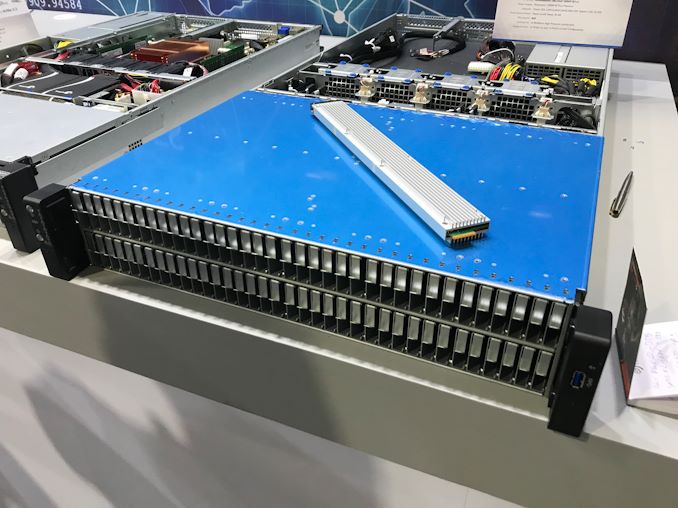
Intel’s ‘ruler’ SSD form-factor is meant to maximize density of solid-state storage devices and improve Intel’s competitive positions on two markets: storage and compute. As it turns out, AMD’s server platform can also benefit from Intel’s EDSFF E1.L drives thanks the number of PCIe lanes supported by the processor. In fact, at Computex we spotted one of the first AMD EPYC-based server carrying 108 E1.L ‘ruler’ SSDs.
EchoStreams’s FlacheSAN2N108N-XX is a 2U machine based on AMD’s EPYC ‘Naples’ with up to 32 cores accompanied by 16 DDR4 memory slots for up to 2 TB of RAM, several M.2 and PCIe slots for caching SSDs or accelerators, six Microsemi PCIe switches and so on. The key feature of the machine is the number of supported hot-swappable E1.L SSDs from Intel as well as storage capacities featured by 108 drives. At present, Intel offers DC P4500-series SSDs featuring up to 8 TB capacities, thus, the server can support a total capacity of up to 864 TB.
When it comes to performance, the FlacheSAN2N108N-XX offers up to 30 GB/s (or 240 Gbps) through RDMA NVMe-oF, it can support up to four NICs, though right now the company does not list exact models.
Intel developed its EDSFF (E1.L and E1.S) aka ‘ruler’ PCIe SSDs in a bid to increase NAND flash storage density in servers and make drives more thermally efficient. Meanwhile, because Intel’s current-generation Xeon Scalable CPUs have 48 PCIe lanes, whereas AMD’s existing EPYC processors feature 128 PCIe, AMD’s platforms can actually take more advantage of such SSDs than Intel’s own platforms.
The FlacheSAN2N108N-XX is already listed on EchoStreams’s website, so expect it to become available shortly. As for pricing, it will depend on exact configuration.
| Want to keep up to date with all of our Computex 2019 Coverage? | ||||||
 Laptops |
 Hardware |
 Chips |
||||
| Follow AnandTech's breaking news here! | ||||||


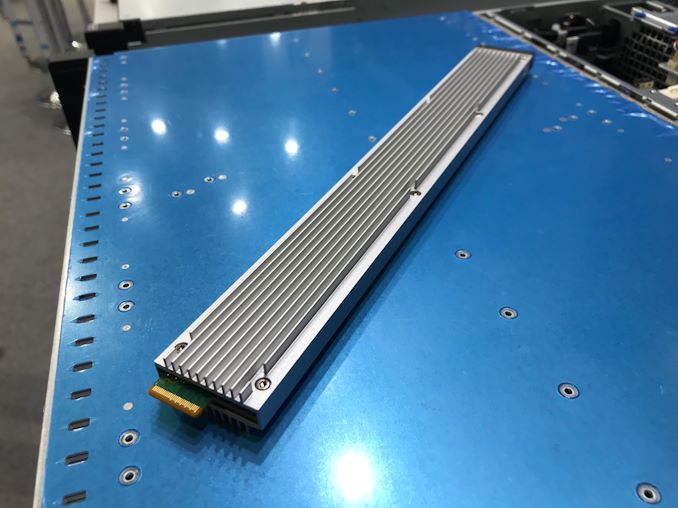
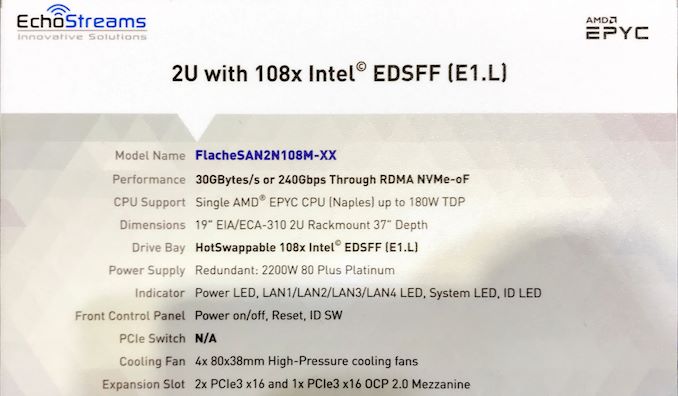
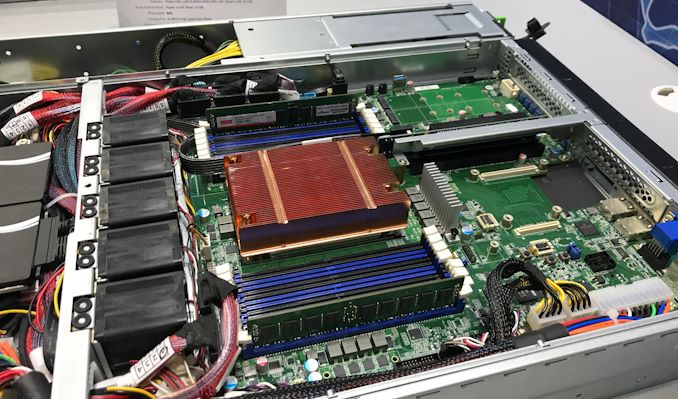
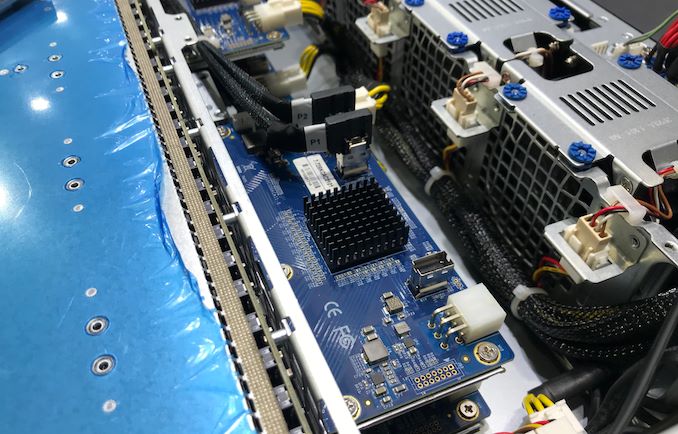








36 Comments
View All Comments
versalife - Thursday, June 6, 2019 - link
Wait. That's illegal.Kappa
HStewart - Thursday, June 6, 2019 - link
No there is nothing illegal about that, what about Intel 8705G with AMD GPU in it and created by Intel.I bet there is a lot AMD CPU systems out there with NVidia GPU's also.
Even though I don't like it Apple uses Intel CPU with AMD GPU - there is nothing bad about that it .
The thing is company's pick the best device for there needs.
Hifihedgehog - Thursday, June 6, 2019 - link
"The thing is company's pick the best device for there needs."And that device is AMD processors, not Intel ones. ;P
niva - Thursday, June 6, 2019 - link
Clearly not. AMD has only recently caught up and surpassed Intel in some ways. For many companies legacy and stability, or low power performance, oftentimes count for more than outright performance. That's just reality.HStewart - Thursday, June 6, 2019 - link
Needs are also in eye of beholder, maybe they caught up desktop gaming machine, some may say even in servers - but mobile platform I would say not even close.But this effort is good for industry, it keeps Intel and even NVidia on its feet. But GPU area AMD severely lacks compared to NVIdia
But times like this are not new, and example is when AMD first went to onboard memory controllers and 64bit??? at the time 64 bit was that much in demand but time has shown it is need - but as developer myself - I believe 64 bit has made developers lazy to not worry about memory needs. As for onboard memory controller - well that natural evolution of CPU - Intel future chips have Thunderbolt built in and with USB 4 around the corner, so will AMD.
It all depending on how you look at things. People have different opinions and Internet is full of opinion including my own. One must take their own path and not from others and this includes computers.
wanderer66 - Thursday, June 6, 2019 - link
Heh, even our internal build shares still drop "x86" and "amd64" bits :-)HStewart - Thursday, June 6, 2019 - link
One more thing about companies, sometimes they have many installations and it is impossible to upgrade - this is clearly been seen in Windows.deksman2 - Thursday, June 6, 2019 - link
Pardon me?I don't understand the choice of using Intel's CPU's especially when they cost about a DOUBLE more than what AMD offers, have pretty much similar or lower performance, AMD's also consume less power, and let's not forget that Intel's CPU's are far more prone to security vulnerabilities than AMD (and Intel suffered about 15% drop in performance because of the security patches... whereas AMD suffered only 3% drop).
There is no justifiable argument for using Intel, unless of course we're either talking about 'brand loyalty' and 'being paid to use that hw'.
OutOfTheBox - Thursday, June 6, 2019 - link
x86 processors are largely commodity products purchased primarily on the basis of computing costs vs power. The most stable things about Intel at the moment are the regularity with which you can expect to hear new HW security vulnerabilities announced and the regularity with which roadmap milestones will be postponed.HStewart - Thursday, June 6, 2019 - link
That is not what I am implying and that attituded is why I don't care for AMD. But it does not mean if AMD fits the need then I will not used it.I do have an AMD CPU / GPU and it fits a specific need - Xbox One S., But I have grown up over games and the need before 4k HD but that need has matured to Samsung 4k Players. But this discussion has got me curious how Xbox One S uses Dolby Atmos on my LG sk-10y.